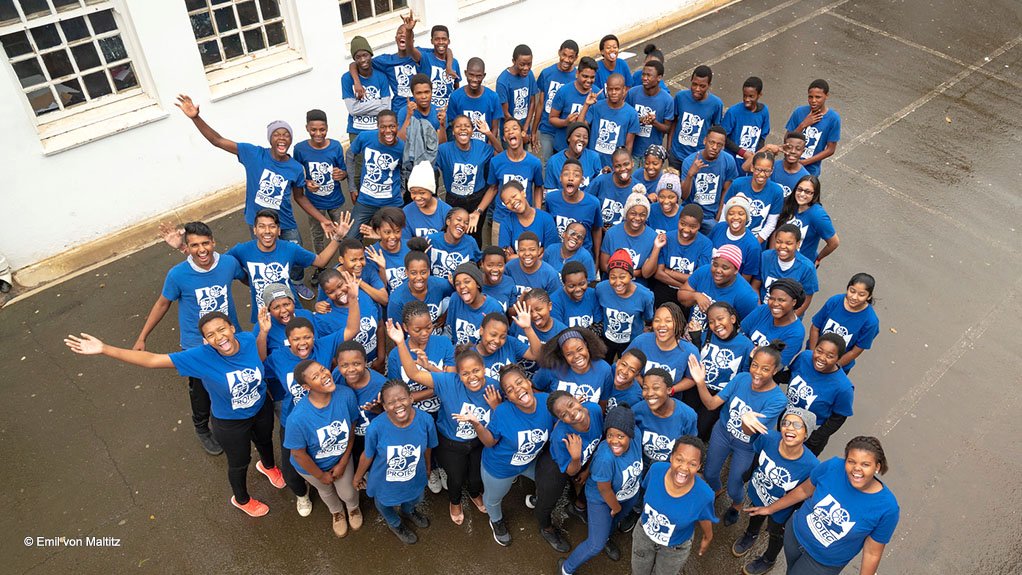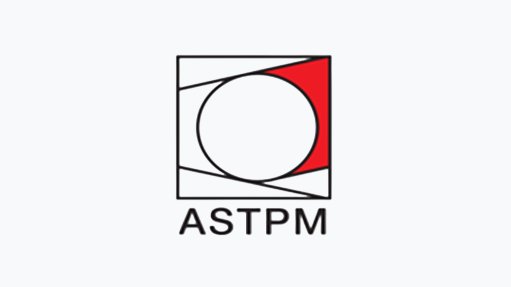Mining’s inability to absorb youth raises questions about its sustainability






SOME BARE NECESSITIES STEM and training programmes should become more accessible and affordable and should be adapted to be more relevant to the interests of the youth
MORE TO THIS PROVINCIAL LIFE WiMSA hosted a Career Fair in Rustenburg earlier this year to help guide and encourage learners to pursue studies that can lead them back into the mining industry
A PROBLEM FREE PHILOSOPHY PROTEC seeks to encourage children and young adults to pursue careers in STEM
Photo by Emil von Maltitz
KHULILE SHOBA The mining industry is facing a shortage of skilled workers, owing to several factors, including the ageing workforce, the lack of adequate training programmes, and the high turnover rate
High youth unemployment, combined with a national skills shortage and the fact that just over a third of the population is between 15 and 35 years old, means that South Africa – already contending with poor economic growth and civil unrest – is barrelling towards an untenable situation.
Government has recognised the looming societal threat and sought to address it through various initiatives such as the public–private collaboration the Youth Employment Service, the Presidential Youth Employment Initiative and Operation Vulindlela, all looking to create employment opportunities and enable skills transfer for the youth.
However, the youth unemployment rate remains catastrophically high; therefore, industries with significant growth potential, such as mining, must do more to attract and retain youth employees.
“If the mining industry does not do more to attract young people, this will exacerbate the existing skilled worker shortage, leading to even greater production disruptions and higher costs, which could ultimately threaten the industry’s long-term sustainability,” says Colliery Training College (CTC) acting CEO Khulile Shoba.
She explains that, according to Minerals Council South Africa, the mining industry employs about 470 000 people, with roughly 10% under the age of 35.
With an estimated 1.2-million young people entering the labour market every year, and with the unemployment rate among youth hovering around 55%, “many young people are looking for work, who are unable to find jobs in mining”.
The lack of jobs available in mining can be attributed, in part, to South Africa’s weak economy, the ongoing energy crisis and the contemptible state of transport infrastructure, all of which have hindered growth.
However, it is also the result of youth entering a labour market for which they are ill-suited, as the job market requires skills that they either do not have or did not nurture.
“The mining industry is facing a shortage of skilled workers, owing to several factors, including the ageing workforce, the lack of adequate training programmes, and the high turnover rate,” says Shoba.
The skills shortage exists despite mining companies investing in skills development every year – as stipulated by the Mining Charter – partnering with nonprofits, universities and educational institutions and offering various bursaries and programmes to aid education and job creation through their Social and Labour Plan commitments. This suggests that existing programmes and educational outcomes are not fit for purpose.
STEM, a Root and Branch Undertaking
Of late, there has been growing emphasis on the promotion of science, technology, engineering, and mathematics (STEM) subjects in South Africa, a push that “aligns with global trends recognising the increasing importance of these disciplines in the twenty-first-century knowledge economy”, says TechnoGirl Trust CEO Staff Sithole.
“However, explanations around interest and performance in STEM subjects at a school level in South Africa have been complex and multifaceted. Despite policy initiatives to promote STEM subjects, several challenges persist, often related to systemic issues such as access to resources, teacher competence, and pervasive gender stereotypes,” she cautions.
Education nonprofit PROTEC CEO Balan Moodley agrees, stating that the emphasis on STEM subjects over at least the last decade has not necessarily translated into more young adults pursuing STEM fields.
“Consider that in 2012 roughly 510 000 learners wrote matric exams, with 44% writing mathematics (maths) and 56% writing maths literacy, whereas in 2022 only 37% of the 726 000 learners who wrote matric focused on pure maths, and the rest wrote maths literacy.”
Similarly, 35% of learners in 2012 wrote physical sciences, compared with 29% in 2022.
“This proves that, while much has been said about the need for STEM subjects, interest from children and young adults has not materialised.”
Both the TechnoGirl programme – an initiative of the TechnoGirl Trust, the Department of Basic Education, Uweso Consulting, and the United Nations Children’s Fund – and PROTEC seek to encourage children and young adults to pursue careers in STEM, with the former primarily focused on girls in under- resourced schools.
Moodley states that significant changes are needed to secure the future of mining and other industries requiring STEM graduates. “The current focus is to encourage STEM subjects at the Further Education and Training (FET) stage, meaning Grades 10 to 12,” however, the foundation for these subjects is meant to be laid between Grades 4 and 9.
As little is done to encourage and excite learners to pursue STEM careers at the earlier stages of their education, by the time most enter the FET stage, they have either already decided to pursue other careers, or their maths and science marks do not meet the required standard.
Shoba cites other challenges that must be addressed to ensure quality STEM education, such as the shortage of qualified STEM teachers, the lack of resources in many schools, and negative stereotypes about STEM subjects.
On that last point, Sithole notes that, even if there is and continues to be success in terms of reducing harmful stereotypes and increasing interest in STEM subjects, the translation of this interest into higher education STEM enrolment, and then into STEM careers, particularly for girls and women, remains a challenge.
“There is often a significant drop-off in the number of females pursuing STEM subjects at the tertiary level and then into careers. While the exact reasons behind this drop-off are multifaceted and often intersect with other socioeconomic factors, it’s clear that more needs to be done.”
On that note, Shoba suggests that STEM programmes and training programmes become more accessible and affordable and should be adapted to be more relevant to the interests of the youth.
“The programmes should focus on the skills and knowledge required for mining but should also be relevant to the interests of young people. They should be offered in a variety of formats, including online, in-person, and blended. They should also be offered in a variety of locations, including schools, community centres, and company offices. Finally, these programmes should be free or low-cost for young people. This can be done by using government funding, corporate sponsorships, or donations from individuals and organisations.”
Knowing Is Half the Battle
A key challenge for the mining sector is perception, with Shoba noting that “the mining industry is often seen as a dirty, dangerous, physically demanding and low-paying job, especially when compared with other sectors of the economy”.
As such, the industry should actively promote mining as a “modern, safe and well-paying career”, while highlighting its ability to cater for and foster ‘future skills’, such as those required for data analytics, robotics and automation.
Sithole agrees, stating that the industry is undergoing significant transformation, which is partly driven by global trends such as sustainability and digitalisation, creating new types of jobs and career paths in mining. Given the relative newness, “these emerging areas might not be as well known among students”.
As such, raising awareness of the opportunities available in mining can help boost youth interest and participation.
Fortunately, work to promote awareness of the mining industry among young people is ongoing, says Women in Mining South Africa (WiMSA) chairperson Raksha Naidoo.
“Many mining houses have identified the need to nurture future industry leaders. More bursaries are available for studies, more representation of strong female leaders serving as role models, and more mentors and coaches have taken on mentees to further develop and support them through their journey. Mentorship remains a foundational pillar at WiMSA and we believe that the role of mentors is key at all stages of one’s journey.”
She cites WiMSA’s Career Booklet, which has been widely distributed and has a diverse representation of the different faces and career options for women in mining. WiMSA also hosted a Career Fair in Rustenburg earlier this year.
“Many mining houses from the region attended the Career Fair and shared bursary and graduate programme information with students, to help guide and encourage them to pursue studies that can lead them back into the industry.”
Meanwhile, TechnoGirl has adopted virtual modes of mentoring as part of its hybrid job shadowing model to help to build momentum and reach even larger audiences of girls.
Sithole adds that increasing awareness around mining-associated companies, such as suppliers and service providers, could also be key. “These companies play crucial roles within the mining value chain, providing equipment, technology, services and logistics crucial to the operation of mines. These sectors offer a wide range of career opportunities, from sales and logistics to research and engineering roles.”
In that vein, PROTEC, in addition to working with Merafe Resources and Kumba Iron Ore, has also run projects for suppliers to the mining industry, such as BMG.
Slow Progress Is Still Progress
Many of the factors that discourage youth participation also discourage women’s participation. These include stereotypes, access to training and development opportunities, the perception of the industry and the working environment.
However, according to CTC’s records, 35% of all trainees are now women, which is a 5% improvement on 2019. Shoba cautions that, while there has been progress over the last three decades, “by now we should have achieved gender parity, at least in the training space”.
Sithole adds that data from the Global Report on Women and the Mine of the Future reveals a “slow upward trend in women’s representation in the sector”.
“Interestingly, despite an overall decline in mining employment in South Africa between 2012 and 2019, gender parity improved by 4%. This suggests some progress in terms of gender equity, albeit against a backdrop of contracting employment opportunities within the sector. It is therefore evident that, while a gradual increase is evident, the rate of increase remains slow.”
One reason for this slow progress is that industry’s working conditions, including inflexible working hours, remote locations, and inadequate health and safety equipment and accommodation for women, are off- putting.
“Skilled women leave the industry for various reasons, chief among them being the fact that they feel unsafe. The lack of support for female victims often forces them out of the industry, and discrimination is an ongoing challenge,” says Naidoo.
“I believe that the industry is trying, but a lot more work needs to be focused on attracting and retaining women in the sector.”
Sithole notes that addressing these deep-seated issues requires a holistic approach, with policymakers and corporate executives adopting strategies that tackle structural barriers, as increasing the number of women in the industry is only one part of achieving gender equity.
“The quality of the work environment, career progression opportunities, wage parity, and representation at leadership levels are also crucial aspects that must be addressed.”
Similarly, increasing the number of youth in the industry is only one step, and the industry should seek to provide meaningful employment beyond merely increasing youth representation.
“The youth are the future leaders of the industry, and we all have an obligation to mentor the youth and support their progress in the industry,” says Naidoo.
Article Enquiry
Email Article
Save Article
Feedback
To advertise email advertising@creamermedia.co.za or click here
Comments
Press Office
Announcements
What's On
Subscribe to improve your user experience...
Option 1 (equivalent of R125 a month):
Receive a weekly copy of Creamer Media's Engineering News & Mining Weekly magazine
(print copy for those in South Africa and e-magazine for those outside of South Africa)
Receive daily email newsletters
Access to full search results
Access archive of magazine back copies
Access to Projects in Progress
Access to ONE Research Report of your choice in PDF format
Option 2 (equivalent of R375 a month):
All benefits from Option 1
PLUS
Access to Creamer Media's Research Channel Africa for ALL Research Reports, in PDF format, on various industrial and mining sectors
including Electricity; Water; Energy Transition; Hydrogen; Roads, Rail and Ports; Coal; Gold; Platinum; Battery Metals; etc.
Already a subscriber?
Forgotten your password?
Receive weekly copy of Creamer Media's Engineering News & Mining Weekly magazine (print copy for those in South Africa and e-magazine for those outside of South Africa)
➕
Recieve daily email newsletters
➕
Access to full search results
➕
Access archive of magazine back copies
➕
Access to Projects in Progress
➕
Access to ONE Research Report of your choice in PDF format
RESEARCH CHANNEL AFRICA
R4500 (equivalent of R375 a month)
SUBSCRIBEAll benefits from Option 1
➕
Access to Creamer Media's Research Channel Africa for ALL Research Reports on various industrial and mining sectors, in PDF format, including on:
Electricity
➕
Water
➕
Energy Transition
➕
Hydrogen
➕
Roads, Rail and Ports
➕
Coal
➕
Gold
➕
Platinum
➕
Battery Metals
➕
etc.
Receive all benefits from Option 1 or Option 2 delivered to numerous people at your company
➕
Multiple User names and Passwords for simultaneous log-ins
➕
Intranet integration access to all in your organisation



















